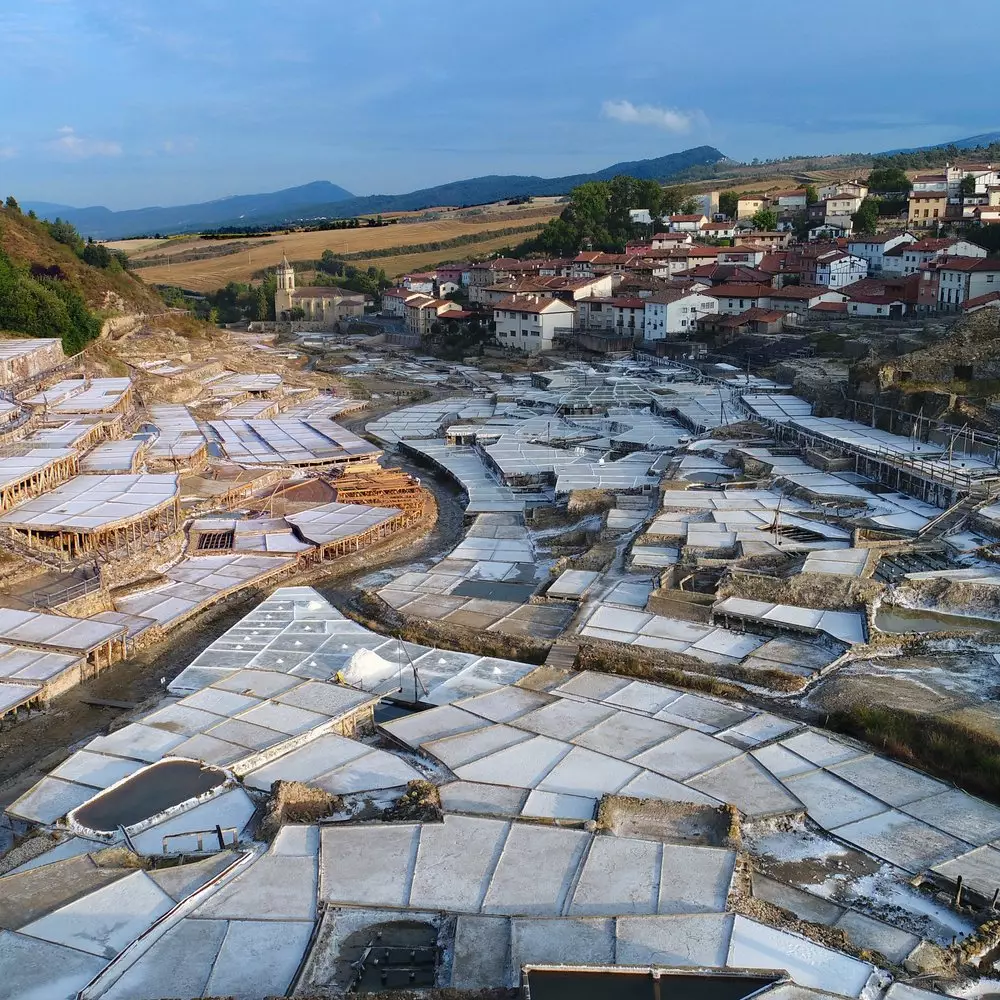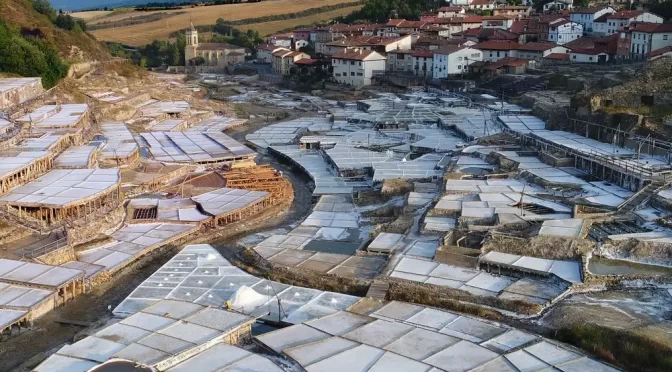There was a time when salt was the most cherished commodity. Wars were fought over control for salt and economies depended on the production of salt. Salt was so important to economic activity that the word salary comes from the Latin word for salt. The oldest city in Europe, Solnitsata in Bulgaria, means salt works and was established precisely because of salt. However, did you know that the oldest active salt works in the world is in the Basque Country?

- Añana is the name of both a city and a valley, in the southwest part of Araba. The heart of the city, Gesaltza Añana (Salinas de Añana in Spanish), dates at least to the tenth century, when, in the year 902, the monastery of San Pedro de Cardeña began mining for salt. Añana is the oldest town in Araba, granted a royal charter in 1140, no coincidence for this ancient salt-producing region.
- However, archeological records indicate that salt has been extracted from the valley since Neolithic times, more than 7000 years ago, making the Salt Valley of Añana (Añanako gatz harana in Euskara) the oldest active salt production site in the world.
- Since the time of the Romans, more than 5000 pans or beds have been constructed to extract salt. Upon these pans, saltwater or brine is poured and the water removed by solar evaporation. This method was implemented “only” as recently as the first century BCE. Before that, the salt was extracted using clay pots that were fired. The method was switched when the Romans came to the region.
- The salt flats themselves formed in the Triassic Period, or 200-250 million years ago. The region is what is known as a diapir, where a less dense material, in this case water, can flow through rocks and rise to the surface, bringing with it material from deep within the earth, in this case salt. Rainwater passes through the salt minerals and resurfaces as brine, which is then evaporated to extract the salt. There are four existing springs in Añana which provide an average flow of 3 liters per second, with an average salinity of more than 250 grams per liter. This is almost 7 times the salinity of the waters of the Atlantic Ocean, but does not quite reach that of the Dead Sea, which is about 350 grams/liter.
- The historical, economic, and cultural importance of the Salt Valley has been recognized by its being declared a Bien de Interés Cultural in 1984 and being added to the World Heritage tentative list in 2012. In 2017 it was named a Globally Important Agricultural Heritage System by the Food and Agricultural Organization of the United Nations and in 2019 it was named an Anchor Point on the European Route of Industrial Heritage.
- Today, salt is not nearly as precious or profitable as it once was and Añana has suffered economically for it. In fact, the salt beds were all but abandoned in the 1970s. However, near the end of the 1900s, a plan to revitalize the salt valley was introduced and, today, nearly half of the 5000 beds are producing salt. In 2021, the valley was given its own certified mark for its salt. You can buy their gourmet salt here.
Primary sources: Añana Salt Valley; Salt Valley of Añana, Wikipedia; Arozamena Ayala, Ainhoa. AÑANA. Auñamendi Encyclopedia. Available at: https://aunamendi.eusko-ikaskuntza.eus/en/anana/ar-18153/; Valle Salado (Añana), Wikipedia
Discover more from Buber's Basque Page
Subscribe to get the latest posts sent to your email.



Eskerrik asko!